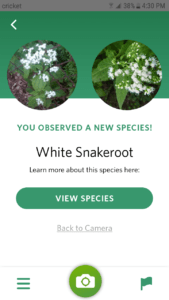A Simple Way To Make Introducing Plant Classification Fun
Make introducing plant classification fun and interest-led with a simple smartphone app. Learn how the Seek app makes it fun and easy to explore plant life.
In education, we tend to do things backward. We want to start with the book – with the head knowledge – and then, once they’re ready, give our kids a chance to try it out, to experience whatever they’ve learned.
We save the fun for last.
That’s a terrible idea. To learn something, we need two things: context and interest.
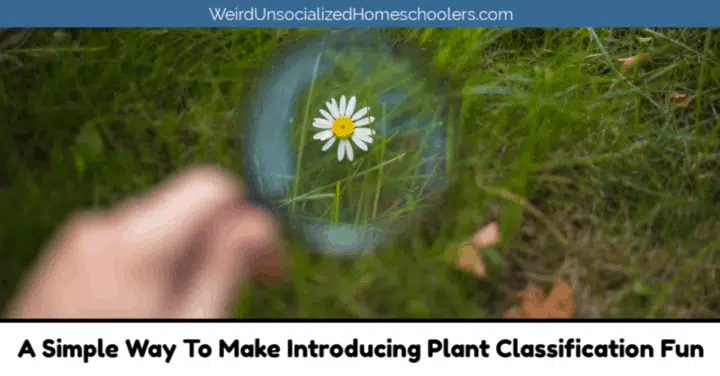
While it’s great to provide background knowledge (and structure and rules as needed for safety), most people learn most effectively through experience. Then we can apply that learning to the larger picture of the textbook or unit study.
This summer, my kids and I worked on plant classification in a rather unorthodox way. We used an app on my smartphone.
Using the Seek App to Introduce Plant Classification
Seek is a free app through a partnership with National Geographic and the California Academy of Sciences. It’s available for both iPhone and Android users. This thing is amazing! Using the app, you hold your phone up to a leaf of a plant you’re interested in. The app goes through the classification process with labels of class, order, family, genus, and species and tells you what plant you’re looking at.
We played with the Seek app all summer. It first came in handy when I *thought* I saw poison ivy but wasn’t sure since it was still small. Since then, my kids call me over regularly to identify unusual plants they encounter. We’ve been learning a lot – and it’s all been child-directed.
How the Seek App Works for Plant Identification
If you’re considering using this tool, here’s a bit of what we learned.

When you open the app, there’s a place to look for specific challenges, but we skip that and go straight to photo mode.
This app uses the traditional plant classification system (kingdom, phylum, class, order, family, genus, and species). Then, it shows on the screen how it systematically works through those different categories to move to positive plant identification.
Classification
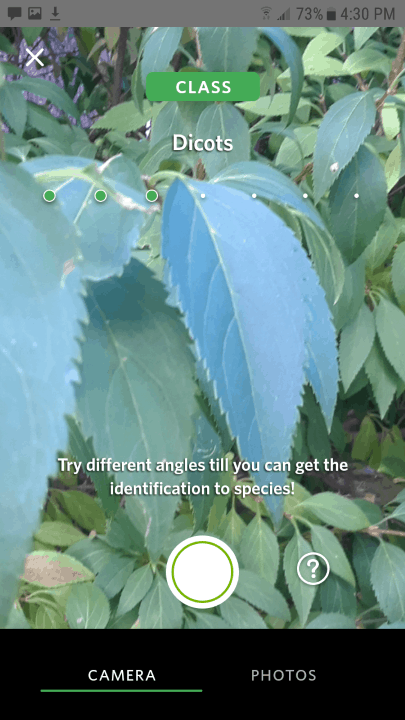
From this app alone, my kids learned the terms “dicots” and its contrast, “monocots.” These words have become part of their vocabulary. When they asked to learn more, we looked up an encyclopedia article about monocots to understand them better.
As the app gets a clearer picture of the plant you’re working to identify, it moves on to the next level, order. Followed by family, genus, and species.
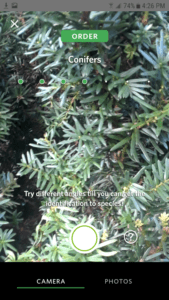
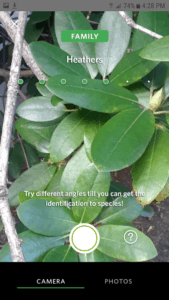


My kids loved watching the app process the data, get a clearer picture, and then see the next category pop up. In the end, we discovered lots of plants we hadn’t found before or didn’t know by name, as well as confirming some that were already familiar.
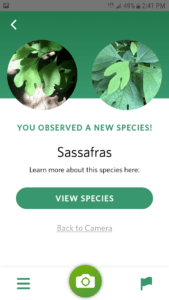

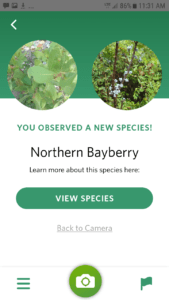
If you so choose, you can give the app permission to save your photo with its geolocation to upload to its database for part of their citizen science project.
Organic Learning
In the end, what I have loved about this exploration is how empowered my kids have been to learn new things. As they have demonstrated interest, they’ve been learning about plants and plant classification along the way. I had tried before to get the kids to engage in the natural world of their own accord. I used books, coloring books, field guides, and nature walks, but it never felt authentic. I always felt like I was pushing the interest, and as soon as I stopped pushing, they lost interest and found something else to do.

With this, they initiate. They ask questions. They find the novel, new, and different looking plants and start describing their characteristics and what they might be. From here, we may have enough of a basis to move on to a book or a field guide. If this happens, it will be because we have established a foundational interest, vocabulary, and general knowledge base through this open-ended exploration.
This type of learning is my favorite. It’s organic, real-life, flexible, and adaptable. And my kids direct the exploration. They want to know more, and I become their resource.
It can work in other subjects and areas, too, not just plant identification. Find a great resource, get your kids excited about it themselves, and then sit back and watch the magic happen.
What fun new resources have you discovered recently?
You Might Also Like
Heather Pleier is a 2nd generation homeschooler raising three curious, creative, out-of-the-box kids on Long Island. They are eclectic game/interest-led/unschooly homeschoolers who dive deep into various interests and celebrate the freedom that homeschooling brings. Her passions include great children’s literature, dark chocolate, exploration, and music. She writes at wonderschooling.net about preserving childhood wonder and curiosity.



